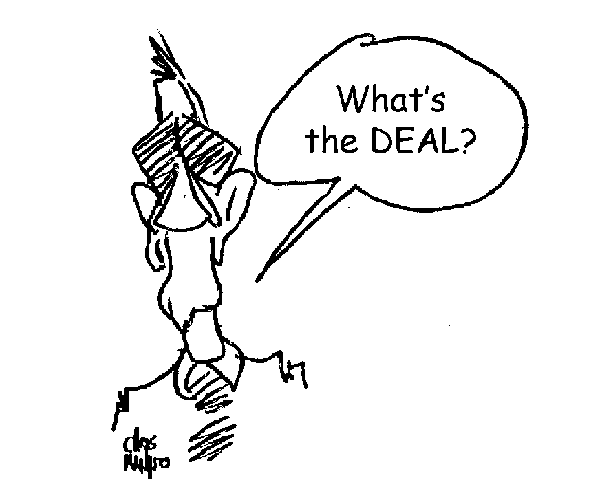Through the years I've noticed many crews talk a good game about doing a thorough pre-brief before and post-brief after a flight and most operators have enshrined those in company manuals. But how many actually follow through? Giving check rides I could always tell which crews did these as normal routine and which were doing them just for my benefit.
— James Albright
1
Pre-Brief
"Are you AWARE?"
We have reams of checklists in the cockpit that remind us what has to be discussed and when, but nothing for before we step onto the jet. Our division of duty usually has the SIC complete the aircraft exterior inspection while the PIC completes all flight planning. When the SIC returns from the jet, a good way to start things is: "A is for airplane, and it's okay."
A - Airplane
Discuss any discrepancies found, MEL items to consider, and general preparations made to the cabin or still needed.
W - Weather
Discuss the weather for the departure, arrival, alternates, and if needed any equal time points or extended operations airports. Also cover en route considerations.
A - Airports
Include airport runways, taxiways, NOTAMS, and any risk analysis considerations.
R - Route
Discuss routing considerations to include navigation requirements, CPDLC and ADS-B or ADS-C, as well as international overflight considerations.
E - Environment
Discuss passenger needs (papers, ice, catering), flight attendant requirements, customs and immigration, or anything else not already covered.
2
Post-Brief
"What's the DEAL?"
You are often too busy to include a post-brief but you have to log the flight time and any aircraft write ups, the "L" in DEAL. Everything before that is a matter of education, learning how to do what you do better. Immediately after the flight everything will still be fresh in your memory so try not to end the day without saying to the other pilot, "What's the DEAL?"
D - Departure
Discuss how the preflight, passenger arrival, engine start, taxi-out, takeoff, and climb out phases went.
E - En route
Discuss how the en route portion went, including any FMS, ATC, or passenger issues.
A - Arrival
Discuss the let down, STAR, approach, landing, taxi-in, shutdown, and passenger debarkation. Remember to cover stabilized approaches and if not stable or "just barely" stable, dissect the approach to discover why.
L - Logbook
Discuss any airplane write ups or items that needed to be noted.
3
Getting the most out of the DEAL
We all make mistakes — if this was easy anybody could do it — and have a natural tendency to dismiss the bad and accentuate the good. But we ought to thoroughly analyze the bad to discover what really went wrong and allow everyone to learn from the mistake. One of the most prideful and arrogant pilots I've ever known always demanded a thorough post-brief and he was as brutal on himself as others. See the story: Vintage Gallo.
This is especially important if you are in a leadership position. If the rest of the flight department realizes you really welcome critiques, they will follow suit. Here are two examples where I encouraged critique. In the first case everyone learned from my mistake, in the second, I learned what my mistake was.
I was flying that pretty Air Force Boeing 747, maneuvering around a Marine Helicopter who had our passenger. We did this often and the key was to minimize ground time so things happened fast. I was at pattern altitude and when we spotted the helicopter we realized he was early and that made us late. I banked hard and felt the stick shaker go off in my hands. The flaps were still at zero. The copilot was consumed with the task of keeping the helicopter in sight so I reached over selected the first notch of flaps. I was mortified by my mistake. I debriefed this fully and discovered nobody on the flight deck knew the stick shaker was triggered. We re-wrote our checklist to get the first notch of flaps out before any helicopter rendezvous.
Years later I was in a visual pattern where there were several obstacles in the final turn and the airport was usually crawling with hard-to-see light aircraft. Most of us had the autopilot fly the final turn using a steady bank and programmed minus seven hundred feet per minute descent. That let us keep our eyes out of the cockpit. I was doing just that one day and ended up well below glide path on the ILS backup. Of course I corrected but was left wondering what had gone wrong. During the debrief the other pilot spotted the obvious that I had missed. We had a thirty knot headwind which meant the normal descent rate was too much.
In either case, somebody learned something out of the exercise, and that, fellow aviator, is the DEAL.


